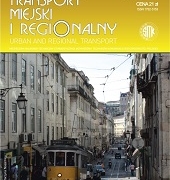Abstract 9/2017
Table of content
Tomasz Kulpa, Sonia Kulas, Beata Popadiak –Passenger trip patterns changes after launch of Suburban Railway in Małopolska
Radosław Bul –Public transport interchanges as a key element of integrated transport system in the agglomeration of Poznań
Krystian Siwek –Microsimulation models on British Isles, theory and practice, part 2
Jacek Malasek –Method for estimation of public transport stops accessibility and attractiveness
Abstracts
Tomasz Kulpa, Sonia Kulas, Beata Popadiak
Passenger trip patterns changes after launch of Suburban Railway in Małopolska
Abstract: Suburban Railway (SKA) is an important element of Krakow and Małopolska region transport services. Its development changed inhabitants trip patterns significantly. In the article results of questionnaire survey among SKA passengers and observations of Park and Ride facilities at railway stations are presented. Based on survey results transport mode and access time to initial railway stops were analysed. Moreover transport modes used before SKA launching were identified. Additionally passengers were asked if they had changed place of living or working. Most passengers (around 40 %) go to the railway station by foot. More than half of inquired passengers need less than 10 minutes to reach railway station. Almost one third of passengers were travelling by rail before SKA launching. Others have abandoned travelling by their own cars (26,3 %), private public transport carriers (18,3 %) or municipal public transport in Krakow (14,1 %). There were also induced trips observed. Change of transport mode is dependent on the SKA line. As a result of the SKA development reduction of numbers of vehicles entering Krakow was estimated as well as reduction of travel time and travel cost of passengers who changed from the car to rail.
Keywords: fast light rail, suburban railway, transport habits, Park and Ride
Radosław Bul
Public transport interchanges as a key element of integrated transport system in the agglomeration of Poznań
Abstract: The aim of the article is to present the conceptual documents on proposals for the construction of public transport interchanges in the agglomeration of Poznań and to compare the propositions mentioned in the documents. The author of the article analyzed 3 planning documents containing proposals of construction of the integrated transport system based on the system of public transport interchanges. The spatial range of the study covered the city of Poznań, 17 municipalities of the Poznań poviat and four municipalities – members of the Poznań Metropolitan Association, located outside the poviat area: Szamotuły, Oborniki, Skoki and Śrem. Document review was performed with descriptive and statistical methods of spatial analysis.
Key words: public transport interchanges, Poznań Metropolitan Railway, agglomeration of Poznań, Metropolitan Poznań Association
Krystian Siwek
Microsimulation models on British Isles, theory and practice, part 2
Abstract: In the first article devoted to the microsimulation models the Author was focused on the theory of the microsimulation and best practices from British Isles’ market. This article relates to the real project and was used as an example. The project was localized in Galway, Ireland and it was aimed at re-design of existing roundabout to improve traffic conditions. Author of the article was responsible for construction of Vissim model for the project. For the project, extensive traffic measurements were used to build the model, to improve calibration and validation process. Both peaks were simulated as 2 hours including 1 hour of peak analysis with 15-min intervals. Challenging calibration and validation process was performed to guarantee appropriate representation of real life behaviours. Forecast stage was supported by West Region Model data from SATURN and LinSig local models. Firstly, proposed schemes were analysed in LinSing based on WRM data and the best option has been chosen. Then the option was modelled very detailed in Vissim to prove correctness of the decision. Comparing both “do-something” and “do-nothing” scenarios showed that proposed scheme indeed improves traffic conditions and reduces delays and queue lengths. Both the model and proposed option had been accepted by local authorities and the next stage of the project – construction design – was launched.
Key words: microsimulation models, Great Britain, Ireland, Vissim
Jacek Malasek
Method for estimation of public transport stops accessibility and attractiveness
Abstract: Inhabitants more often use public transport when public transport stops are easily accessible. Pedestrian friendly city environment makes it easier to take a difficult decision on not using a car for journeys within urban area. Easy accessible public transport stops are crucial for changing travel behaviors for more environmental friendly. A method presented in the article allows to measure public transport stops accessibility on foot as well as a level of fulfilling public transport users expectations. Suggested method is an important tool for measuring public transport services efficiency and living standards in particular neighborhood. It could be also useful for urban real estate market analyses when at present, because of traffic problems, good public transport accessibility can increase a house value by even over 10%.
Key words: public transport, pedestrians, public transport stops accessibility

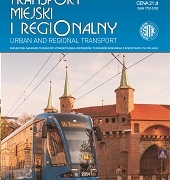 SITK RP
SITK RP 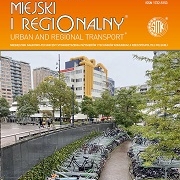 SITK RP
SITK RP 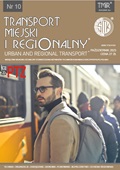 SITK
SITK 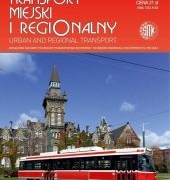 SITK RP
SITK RP 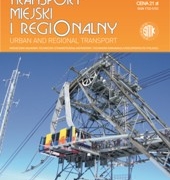 SITK RP
SITK RP 